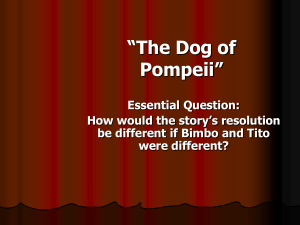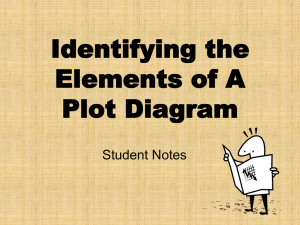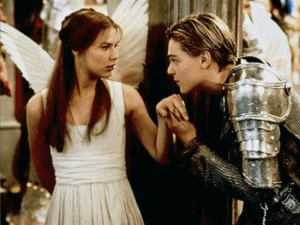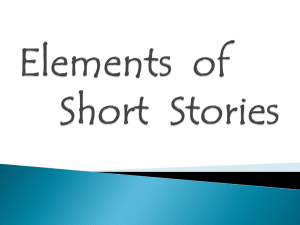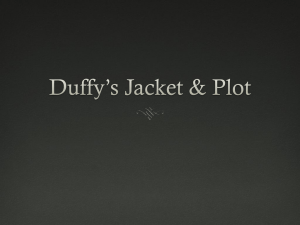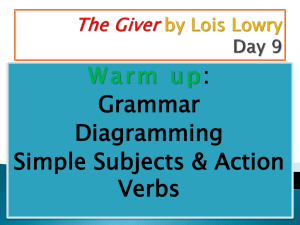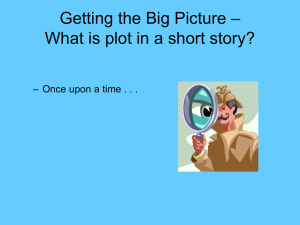Teaching Plot Structure Through Short Stories
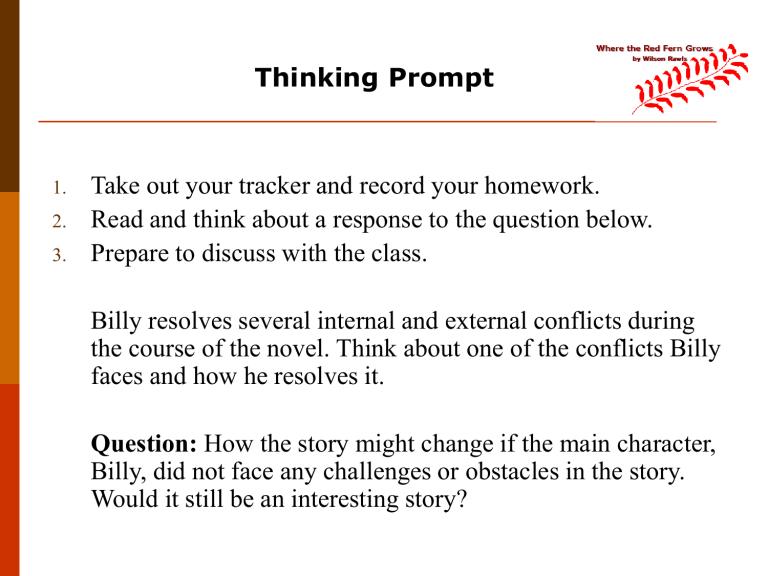
Thinking Prompt
1.
2.
3.
Take out your tracker and record your homework.
Read and think about a response to the question below.
Prepare to discuss with the class.
Billy resolves several internal and external conflicts during the course of the novel. Think about one of the conflicts Billy faces and how he resolves it.
Question: How the story might change if the main character,
Billy, did not face any challenges or obstacles in the story.
Would it still be an interesting story?
Elements of a story
Identifying the plot and its effect on a story.
Plot Defined
Plot is the literary element that describes the structure of a story. It shows the order of events and actions within a story.
Four Basic Parts of a Story
Five Plot Components within those story parts
Climax: the turning point, the most intense moment—either mentally or in action
Rising Action: the series of conflicts in the story that lead to the climax
Falling Action: all of the action which follows the climax
Exposition or Introduction:
Characters are introduced, setting is established, and initial conflict exposed.
Resolution: the conclusion, the tying together of all of the threads
Putting It All Together
Exposition
Rising Action
Turning
Point
Falling Action
The End.
1. Exposition
Here the characters are introduced. We also learn about the setting of the story. Most importantly, we are introduced to the initial conflict.
2. Rising Action
This part of the story begins to develop the
). A building of interest or suspense occurs.
Conflict
• Conflict is the dramatic struggle between two forces in a story.
• The protagonist is trying to reach a goal.
• The antagonist stands between the main character and the goal.
• Without conflict, there is no plot.
Types of Conflict
Man vs. Man
Man vs Nature
Man vs Society
Internal Conflict
Man vs Self
Every plot is made up of a series of incidents that are related to one another.
Climax
High point/turning point
Billy trains his dogs well.
Billy hikes to
Tahlequah.
Billy saves to buy his dogs.
Plot Triangle
© Walt Disney
Introduction
Setting &
Characters
Resolution
Or conclusion.
3. Climax
This is the turning point of the story.
Usually the main character comes face to face with a conflict. The main character will change in some way.
4. Falling Action
All loose ends of the plot are tied up. The conflict(s) are taken care of.
5. Resolution
The story comes to a reasonable ending.
Definitions
Climax: the turning point, the most intense moment— either mentally or in action
Rising Action: the series of conflicts in the story that lead to the climax
Falling Action: all of the action which follows the climax
Exposition or
Introduction: Characters are introduced, setting is established, and initial conflict exposed.
Resolution: the conclusion, the tying together of all of the threads
Sources
www.readwritethink.org/
http://www.ozarksnaturalistsnotebook.com/PA
GE040112-ozarks.html
Identifying Elements of a Plot Diagram, alex.state.al.us
Wilson, R.(1961). Where the Red Fern Grows.
New York:Bantam
Microsoft Powerpoint

